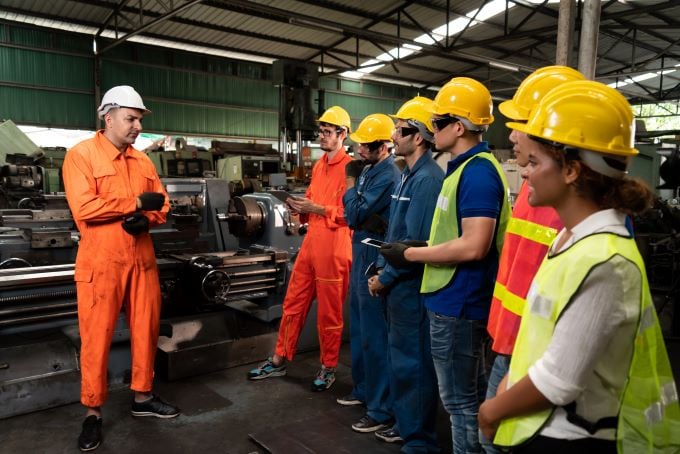As the modern workplace continues to evolve and modify, we must stay ahead of the curve in employee care. Identifying hazards and possible improvements in the workplace, providing care for employees, and understanding their needs are essential. From the moment the hiring process begins to the day an employee retires, providing responsible healthcare, the act of providing employees the healthcare and wellness programs they need to succeed, should be a number one priority.

Lifecycle of an Employee
Pre-Hire
As workplaces take on the process of providing, and leading, responsible healthcare it is essential that they understand the necessary steps to take. This process beings with the Job Demands Analysis.
A job demands analysis forms the basis for hiring, informs future care in Return to Work or Stay at Work programs, and provides critical information about potential accommodations if an employee is ever injured. With a properly administered job demands analysis you can learn information vital to identifying the best candidate for any position, such as:
- Essential Functions of the job (determining the exact tasks employees will be completing, and how they will be completed)
- Objective and measurable physical demands (used in pre-employment testing and Fit-for-Duty testing to determine whether an employee can complete every task)
- Objective cognitive demands (to understand and communicate what is required from a position)
- Objective environmental exposure (to identify any potential risks or variables present in the work environment)
By providing a clear understanding of the job requirements from the beginning, applicants can make informed decisions about their suitability for the job and employers can identify the candidates who are best for a position.
The Hiring Process
The hiring process is extensive. From application to post-offer testing, there are extensive resources invested in potential candidates. So, it is vital to utilize those resources to the best of your ability.
During the Application and Screening process, you should present candidates with pertinent healthcare information as soon as possible. Letting an employee understand the essential functions and demands of the jobs leads to fewer resources used attempting to identify candidates who could self-identify that a position is not right for them. This can save significant costs associated with the completion of the hiring process or even just post-offer testing.
The Interview process is a great time to identify a candidate who is the right culture fit for your company. Scenario-based questions allow candidates to answer honestly and thoroughly based on possible situations they could face in the workplace and give you the best chance to understand if they would work well with your teams.
Post-offer processes, with baseline testing, strength testing, and drug testing, can narrow down a great set of candidates to potential employees. These tests set you up for future success with testing that identifies candidates who are capable of completing every part of the job.
During Employment
As the onboarding process begins employers should provide feedback and support to employees, ensuring they feel valued and supported. A robust onboarding program sets an employee up for future success.
Investment in onboarding programs should include body mechanics training, ergonomic evaluations, and other necessary training for the new employee. Supervisors then reinforce these programs in daily meetings, or weekly trainings to improve the program's engagement and retention. Maintaining and developing a healthier workforce leads to long-term growth and savings.
Incident Reporting
In the workplace, a comprehensive incident reporting system, a well-designed wellness program, and effective communication are crucial for preventing incidents while also maintaining a safe and productive workplace. For example, a good stretching program can prevent injuries and improve overall wellness. Check out more on this topic with "The Value of Stretch and Flex" from Briotix Health.
Injury Prevention
Of course, while preparation is key and every employer would hope to avoid 100% of injuries, they can still happen. A successful return to work plan, approved by providers, can result in less lost work days and reduced stress. Keeping employees active and at work, or providing alternative transitive work assignments can significantly improve turnover rates. Investment in employees continues to shine no matter the place or time.
Nearing Retirement
Wellness programs can help organizations connect with employees and maintain knowledge across generations of employees. Encourage employees nearing retirement to participate in mentoring programs, passing down knowledge and fostering new leaders.
Accommodations should be made for employees to ensure they can continue working safely and maintain a responsible work-life balance.
Implementing these strategies can ensure that organization's employees are well-informed about their benefits, safety measures, and opportunities for growth and development.

Leading the Charge
Responsible hiring practices, injury prevention programs, communication plans, and ongoing leadership support are essential to maintaining and continuing to lead in responsible health care. Understanding the employees' journey from hiring to retiring is can help in creating and maintaining your best possible workforce.
Keeping employees invested in their success and the companies success is a recipe that has been shown to have amazing results, again and again. And that recipe starts with understanding every employees journey from day one. For the expert opinion on your workplace and solutions customized for you, contact Briotix Health today.
The Briotix Health Webinar series features experts discussing topics they care about, including Sandra Miller, a licensed physical therapist and certified industrial ergonomist with experience in industrial sports medicine, ergonomic services, wellness, human resources, and more. Sandra has worked in clinical, research, and public utility environments, helping them with injury prevention, benefits, ergonomic processes, and return to work. Sandra recently presented a webinar on Hiring to Retiring: Leading the Charge in Responsible Healthcare. You can watch the recording on the Briotix Health site.